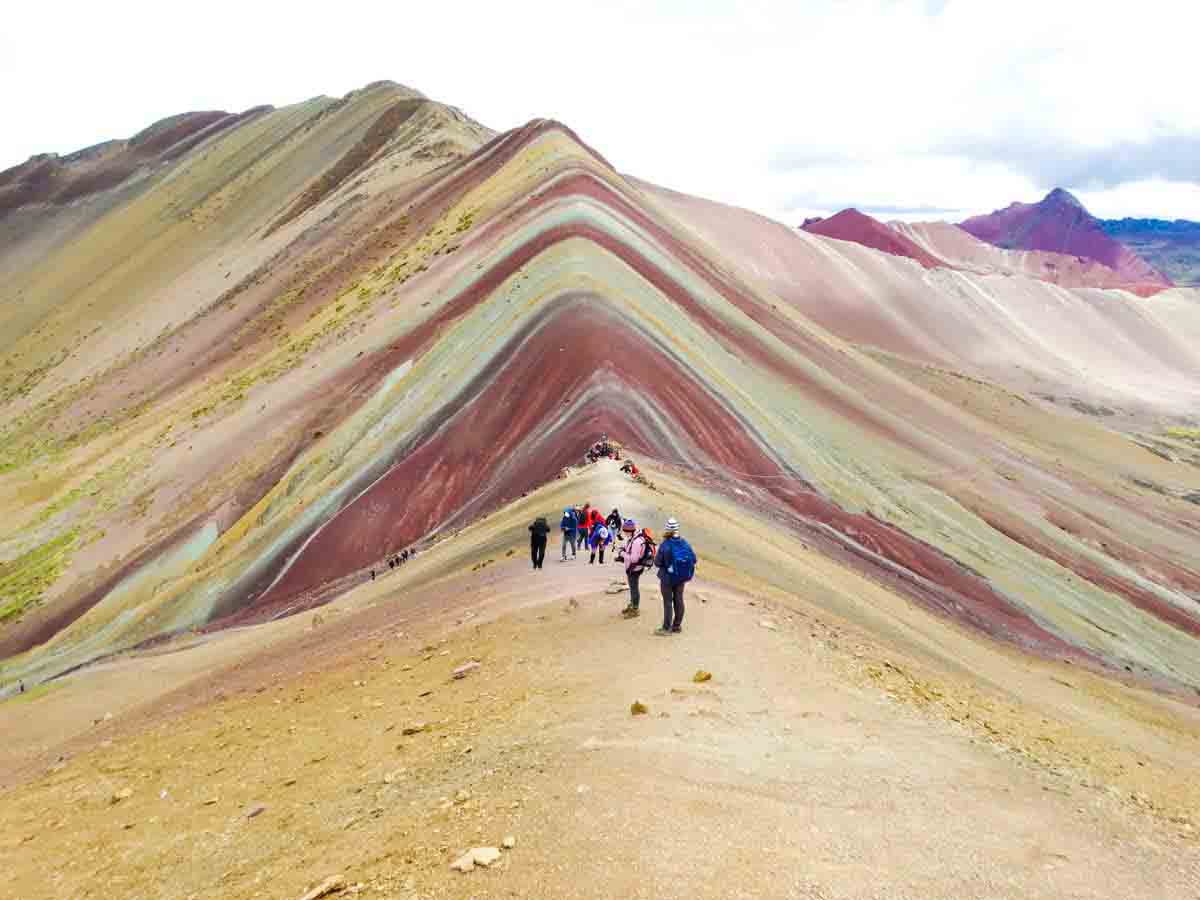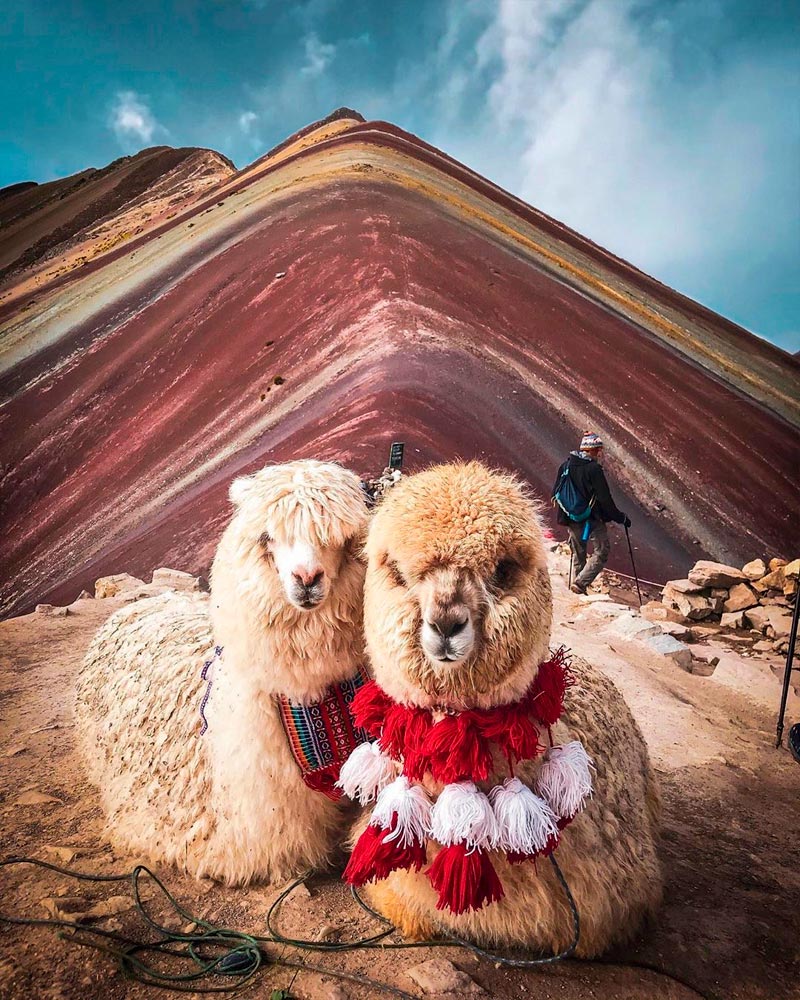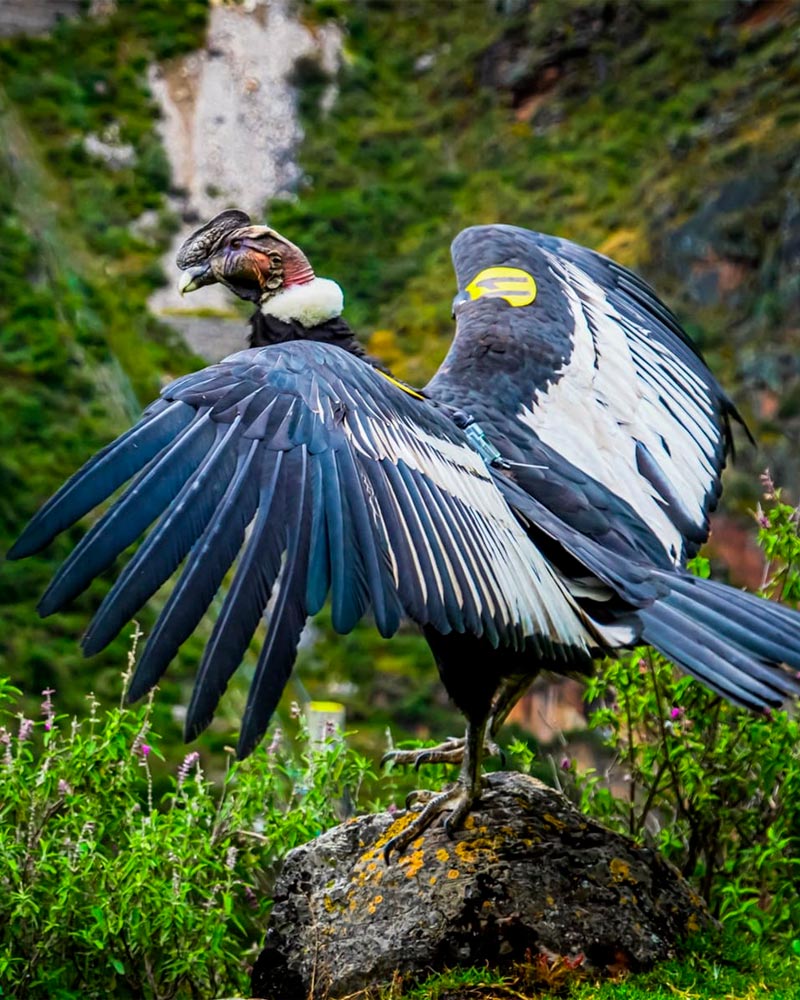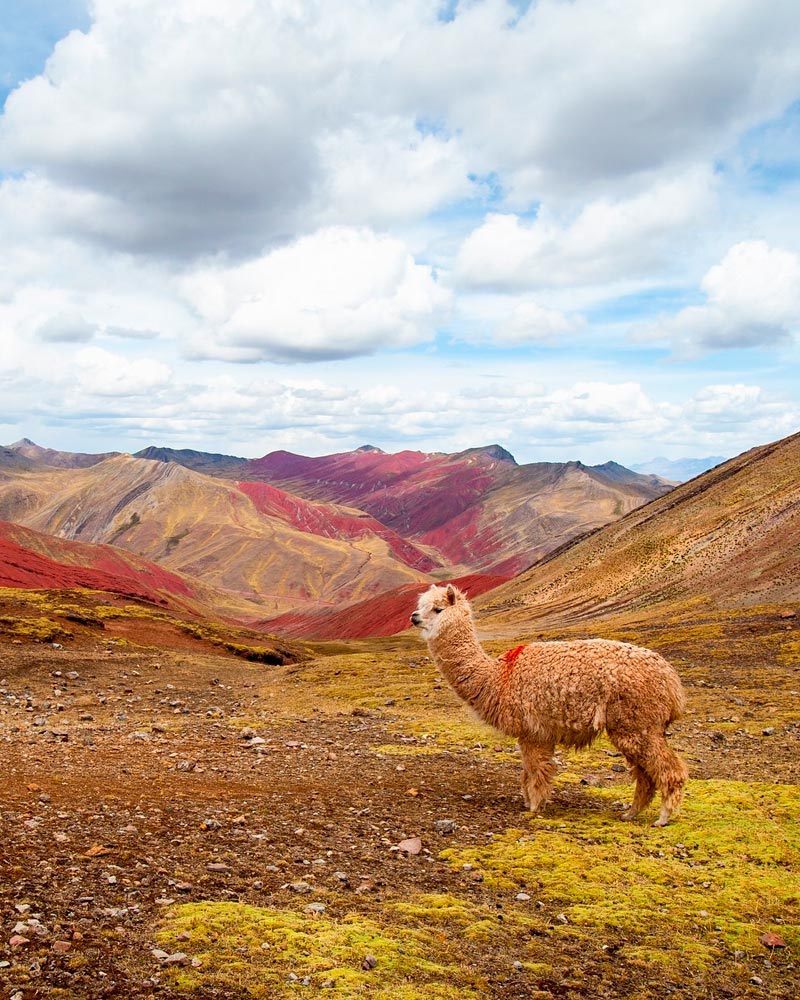

The Rainbow Mountain Cusco, known as Vinicunca, is a unique geological phenomenon located in the Vilcanota Mountain Range. This high-mountain destination has quickly become one of Peru highlights because of its distinctive range of colors.
Unlike snow-capped peaks, the coloring of Vinicunca is a direct result of its complex geological history. The formation began with the sedimentation of rock layers with different mineral compositions millions of years ago. Later, the lifting of the Andes Mountains (Andean orogeny) fractured and tilted these layers, which were originally flat.
The process ended with erosion, which exposed the sediment layers to oxygen and water, which caused the minerals to oxidize and the subsequent formation of the visible color stripes. Visiting the mountain of 7 colors involves doing a demanding hike, which makes it one of the most popular single-day Peru treks. This guide will go deeper into the scientific process of its formation, breaking down the mineral composition of each color and the factors that influence its visibility.
Located in the heart of the Peruvian Andes, Rainbow Mountain, also known as Vinicunca or Mountain of Seven Colors, is one of Peru's most unique and visually striking geological formations. This natural phenomenon not only draws attention for its eye-catching colors but also for its geological origin, which dates back millions of years when various tectonic, climatic, and sedimentary processes shaped this impressive landscape.
Vinicunca rainbow mountain is part of the Vilcanota Mountain Range, a major Andean branch that also hosts the majestic Apu Ausangate, considered a protective deity in the Andean worldview. The mountain's coloration is due to the presence of different minerals accumulated in layers over time, a result of complex geological processes combined with erosion and the subsequent exposure of these layers due to deglaciation.
Mountains are the result of geological processes that happen over millions of years and involve Earth's internal and external forces. To understand the beauty of places like the Mountain of 7 Colors, we need to explore how these tall formations that define the Andean landscape come to be.
Generally, a mountain forms when huge tectonic plates, the stiff parts of Earth's lithosphere, crash into each other or move, causing folds, breaks, and rises in the Earth's crust. Over time, these movements create mountain ranges, valleys, and stand-alone peaks, many of which become natural symbols of their area.
Besides tectonic activity, a mountain's shape is also changed by weather factors like wind, rain, snow, and glaciers. These things wear away, carry, and drop materials on its surface, giving it its current shape and feel.
The 7 Colors Mountain is the result of a complex geological history that combines sedimentation, tectonic activity, and erosion over millions of years. This important destination in Peru is not only visually stunning but also a geological testament to the distant past of the Andes.
The formation of Vinicunca goes back to the Tertiary period, about 24 million years ago. At that time, the area where it stands today was covered by sea and river basins that collected sedimentary materials like sand, clay, and mineral salts.
Over time, these sediments became compressed, forming rock layers like sandstones, siltstones, and marls. Later, during the active phase of the Andean mountain building, the movement of tectonic plates lifted these sediments from the bottom to the surface, folding and breaking them.
This tectonic process, along with surface erosion, allowed the different mineral layers to be exposed to the weather, creating the multicolor visual pattern that now defines Vinicunca.
Until a few decades ago, much of the 7 Colors Mountain stayed covered by snow and ice, especially in the cold seasons. However, climate change and the melting of glaciers in the Vilcanota Mountain Range uncovered the colors that now make it famous.
This event, known as deglaciation, not only changed the high-altitude ecosystem but also revealed the multicolored layers that had been hidden. After the ice melted, wind and rain erosion began to shape the surface even more, highlighting the color divisions and making them easier to see.
While local communities have known and traveled these mountains for centuries, the seven Colors Mountain only became known as a tourist attraction around 2015. It was thanks to the shrinking snow cover that the colors started to stand out, and the first photos shared by hikers quickly gained attention on social media.
Since then, the mountain has seen a huge rise in popularity, becoming one of the most requested day trips from Cusco. The route, which was once used by shepherds and farmers, is now set up with marked paths, tourist services, and organized access points from areas like Cusipata and Pitumarca.

The beauty of the Rainbow Mountain isn't from a legend or an optical effect. Its many colors have a scientific reason linked to its geology and the natural erosion process that exposed layers of mineral-rich sediments over millions of years. The color differences are mainly due to specific minerals in each layer and how they react with sunlight, moisture, and high-altitude air.
Each color stripe in Vinicunca is made of different types of sedimentary rocks, with specific minerals. These layers, laid down horizontally over millions of years of geological build-up, were later brought to the surface by the rise of the Andes and then worn away by erosion. Here's a summary of the main colors and where their minerals come from:
Vinicunca isn't the only multicolored mountain in Peru, though it is the most famous. There are other similar geological formations that share a similar geological past, but with different looks and tourist features:
Palcoyo Mountain
Pallay Punchu Mountain

Rainbow Mountain has become one of Peru's most famous tourist spots, attracting thousands of visitors from all over the world each year. Its unique colorful look, plus its spot in the Andes Mountains, has made it a geological and cultural treasure. But more than just its colors, Vinicunca is a place with a strong natural and old identity that should be explored deeply.
Vinicunca is in the Cusco region, specifically in the Canchis province, Pitumarca district, very close to the Ausangate snow-capped peak. Also, it sits at about 5,036 meters (16,522 feet) above sea level, so altitude sickness (soroche) is a real possibility for those who are not used to the height. On the other hand, the weather here is cold and dry, with temperatures that can drop below -5 °C (23 °F) in the mornings and nights, although at noon, with sun, it can reach 12 to 15 °C (54 to 59 °F). The best time to visit is during the dry season, between April and October, when the sky is clear and the colors are brighter.
Even though it's a high mountain route, there are several ways to get to Vinicunca, each with different levels of difficulty and time:
Despite the extreme height, Vinicunca and its Andean surroundings are home to many different kinds of plants and animals adapted to the tough high-altitude climate conditions. The area has sparse plants, typical of the Andean high plain (puna), and special animal species.
Featured Wildlife:
Typical Plants:
 |  |  |
While Vinicunca is the most popular colorful mountain in Peru, it's not the only one. The Cusco region offers other equally stunning and sometimes more accessible options for those looking for surreal landscapes, unique trekking routes, and unforgettable cultural experiences. Also, it's possible to combine a visit to Rainbow Mountain with iconic routes like the Inca Trail, the Salkantay trek, or an expedition to Machu Picchu.
Rainbow Mountain can be part of a more complete trip through the Andean south of Peru, by combining it with legendary routes:
Although only a day trip, yes, it is possible to visit Rainbow mountain and then start Inca Trail or take the Machu Picchu tours. we recommend you first hike Rainbow mountain, then you can hike the Inca Trail Peru, Salkantay trek or visit Machu Picchu. Both trips are starting from Cusco and it's not possible to start from other sites. This hike is not for the faint of heart as the altitude is a challenge. Headaches are almost certainly part of the hike. But after a few days of acclimatization in Cusco, you should definitely try it! The view is definitely worth it, and it's a unique experience in Peru!
Recommendation: Visiting Vinicunca before Machu Picchu helps you get used to the altitude and be in better physical condition for the walks in the Inca city.
Vinicunca and the other routes mentioned mostly start from the city of Cusco. Access logistics can change depending on the route, but there are common things to keep in mind:
Peru offers fascinating experiences that reveal natural landscapes, historical monuments, and living cultures, captivating those who seek adventure and discovery in every corner of its territory. Get to know the most outstanding tours:
Rainbow Mountain Peru Tours
Other trips in Peru
If you want to visit Machu Picchu, we recommend you to book your Machu Picchu Entrance Tickets in advance, so you will enjoy your Vacation in Machu Picchu without any problem.